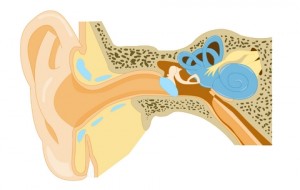 Richard Clendaniel, PT, PhD[/caption]
Richard Clendaniel, PT, PhD[/caption]
Richard Clendaniel, PhD, PT, vestibular expert and instructor for Education Resources publishes a paper in the Journal of Neurologic Physical Therapy (34:2): 111-116, 2010
Summary:
The efficacy of both habituation and adaptation exercise interventions in the treatment of unilateral vestibular hypofunction has been demonstrated in several prior studies. The purpose of this paper, by Richard Clendaniel, was to describe the preliminary results of a study that compared the effects of these two different exercise approaches on outcomes related to vestibular function.
Seven participants with unilateral vestibular hypofunction completed a 6-week exercise intervention after randomized assignment to either habituation (H) exercises, or gaze-stability (GS) adaptation exercises. The following measures were taken pre-treatment and post-treatment: Dizziness Handicap Inventory (DHI) to measure the symptom impact, motion sensitivity quotient (MSQ) to assess sensitivity to head movements, and the dynamic visual acuity test (DVA) as a measure of gaze-stability during head movements.
Gaze-stability and habituation exercises have previously been shown to decrease symptoms of dizziness and increase function in individuals with vestibular disorders. The preliminary results of this study indicate that both exercise interventions lead to a reduction in the self-report measure of the impact of symptoms on the ability to function, a decrease in the sensitivity to movements, and an improvement in the ability to see clearly during head movements. The author states: “Continued investigation will be needed to determine if these results will hold, to determine if there are different effects of the two interventions, and to determine the mechanisms of improved visual acuity.”
The actual mechanisms underlying the improved dynamic visual acuity test (DVA) for either intervention are not known. Analysis of the eye movements during the DVA test both pre- and post-intervention may help elucidate these mechanisms but were considered beyond the scope of this paper.
Dr. Clendaniel, recently appointed to the Medical Advisory Board for VEDA; Vestibular Disorders Association, teaches a number of Vestibular Rehab courses for Education Resources including the new Cervicogenic Dizziness online course:
Vestibular Rehabilitation: Evaluation and Management of Individuals with Dizziness and Balance Disorders
Vestibular Rehabilitation: Advanced
Online Course:Vestibular Rehabilitation: Cervicogenic Dizziness
Clinicians: What has been your experience treating patients with unilateral vestibular hypofunction? Do you utilize habituation exercises, gaze-stability adaptation exercises or both? Will this research change what you do clinically?
]]>
